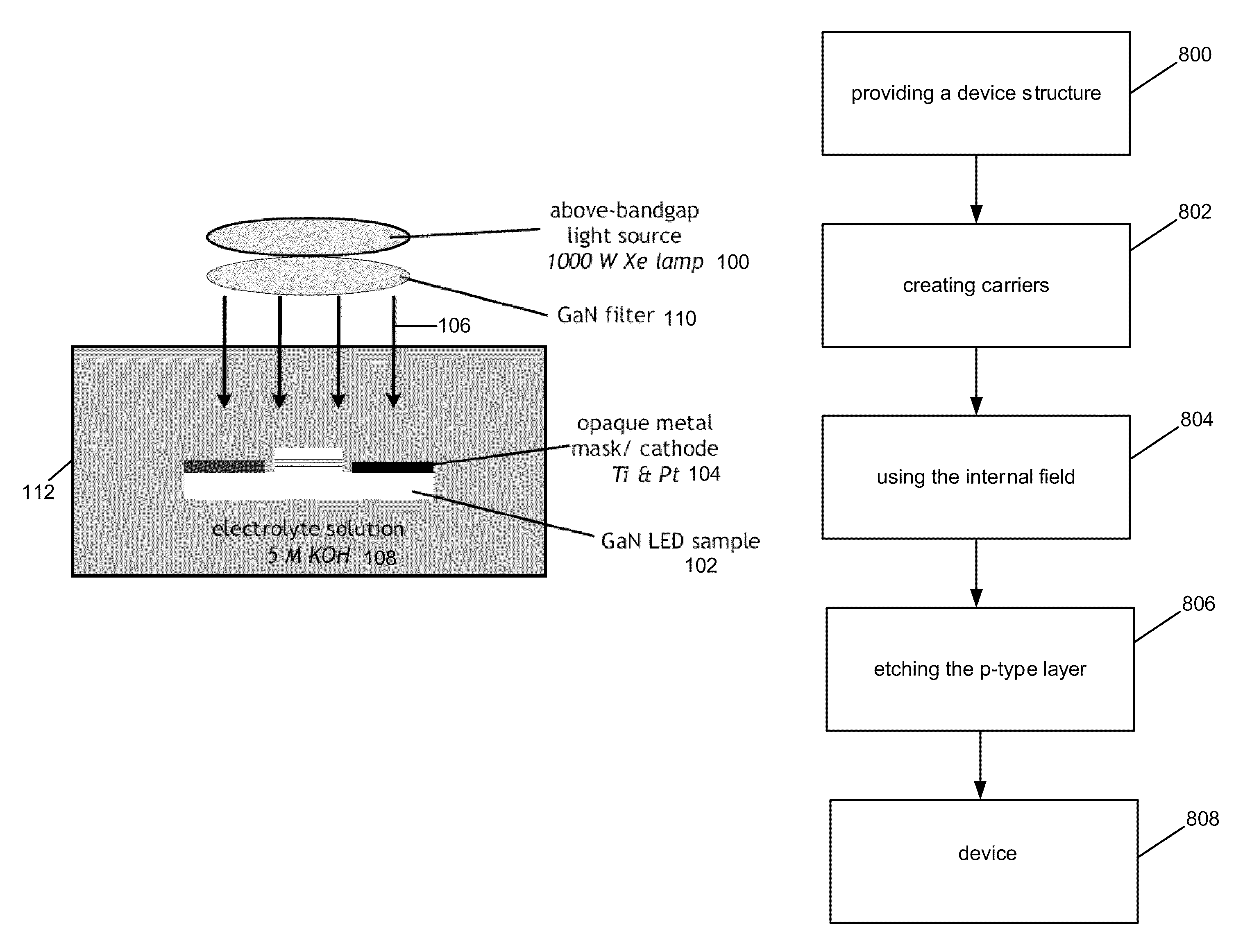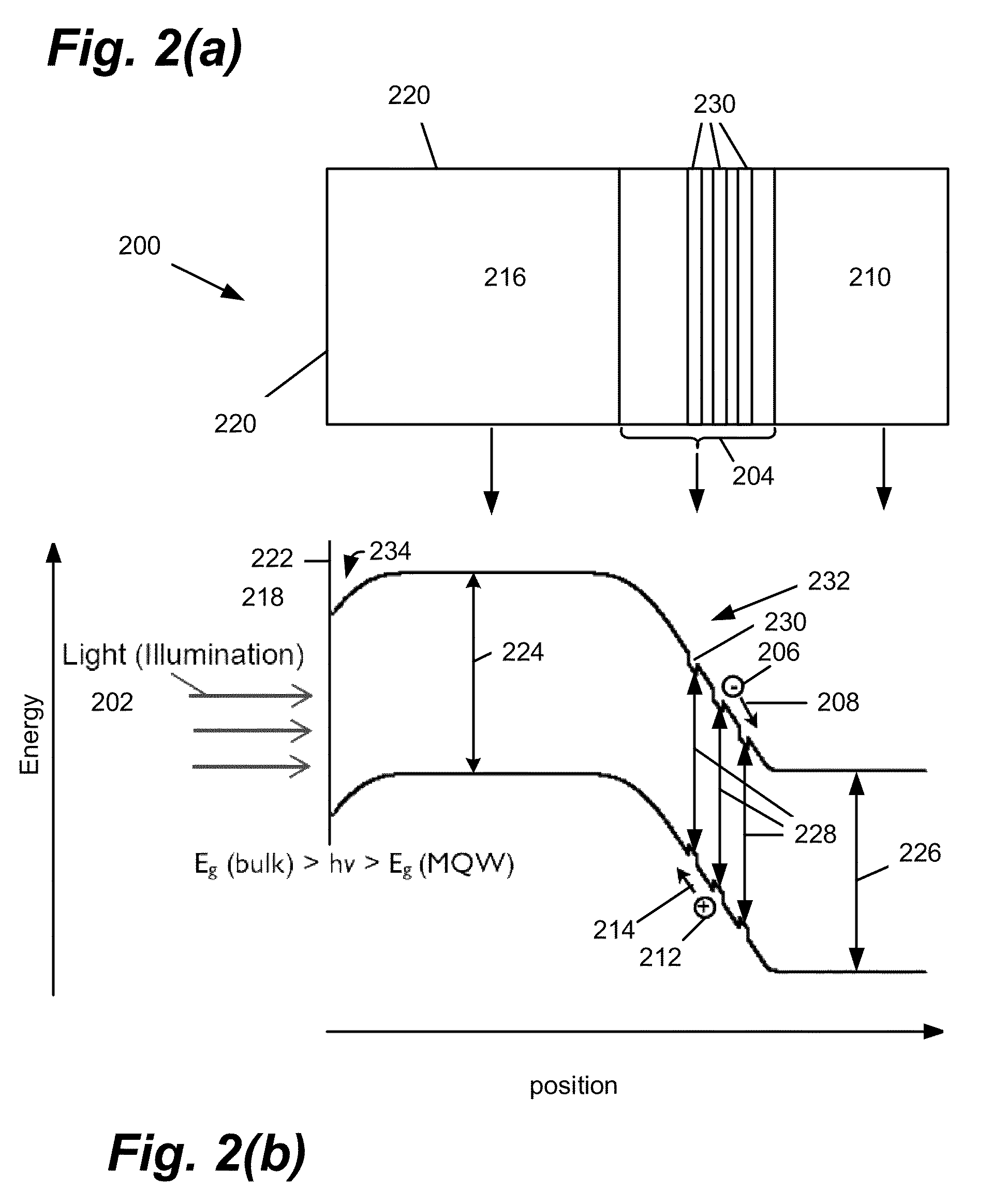Photoelectrochemical etching of P-type semiconductor heterostructures
a technology of p-type semiconductor and heterostructure, which is applied in the direction of semiconductor devices, electrical equipment, basic electric elements, etc., can solve the problems of difficult to achieve pec etching of p-type semiconductors, limited success in etching p-type layers, and elevated temperatures, so as to achieve smoothness or roughness, the effect of reducing the damage to the p-type semiconductor etched by p
- Summary
- Abstract
- Description
- Claims
- Application Information
AI Technical Summary
Benefits of technology
Problems solved by technology
Method used
Image
Examples
Embodiment Construction
[0039]In the following description of the preferred embodiment, reference is made to the accompanying drawings which form a part hereof, and in which is shown by way of illustration a specific embodiment in which the invention may be practiced. It is to be understood that other embodiments may be utilized and structural changes may be made without departing from the scope of the present invention.
Overview
[0040]There have been limited reports of PEC etching of p-type semiconductors in the past, and they have generally required elevated temperatures, a substantial external bias on the system, or a complex experimental apparatus. In addition, etch rates are generally very slow compared to n-type materials.
[0041]The key requirements are: (a) there must be a driving force for holes to move towards the surface, rather than the bulk, of the p-type layer, and (b) electron-hole pairs must be generated in a separate area of the structure than the surface to be etched.
[0042]For example, using ...
PUM
 Login to View More
Login to View More Abstract
Description
Claims
Application Information
 Login to View More
Login to View More - R&D
- Intellectual Property
- Life Sciences
- Materials
- Tech Scout
- Unparalleled Data Quality
- Higher Quality Content
- 60% Fewer Hallucinations
Browse by: Latest US Patents, China's latest patents, Technical Efficacy Thesaurus, Application Domain, Technology Topic, Popular Technical Reports.
© 2025 PatSnap. All rights reserved.Legal|Privacy policy|Modern Slavery Act Transparency Statement|Sitemap|About US| Contact US: help@patsnap.com



